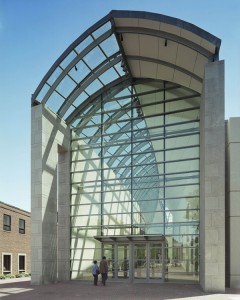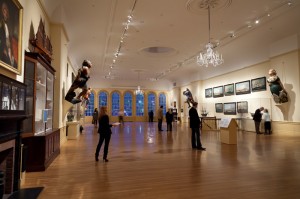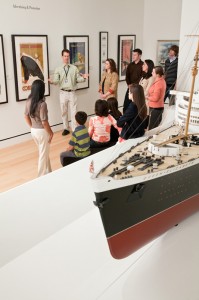Peabody Essex Museum is Haven for Ships and Shipwrecks
Ghost stories, spooky mansions and witchcraft hysterics are just a few of the paranoid presentations of Haunted Happenings in Salem, Massachusetts, at Halloween. There are tales of ruthless pirates, ocean demons and the woman in black whose spirit haunts the town where her child was accidentally killed. Anyone who sees her face will die, so they say.
But not to worry. For shipwreck buffs, Salem isn’t entirely characterized by ghosts, gremlins and gore. It’s also the home of the Peabody Essex Museum, a venerable institution that most of the Halloween revelers eschew. For 200 years, Salem was one of the richest and most renowned seaports in North America. Its ships’ captains, who founded the East India Marine Society in 1799, sailed the world in search of international trade. In addition to tea, spices, silks, ivory and jade, ships’ masters returned with extraordinary works of art and culture from exotic locales. A society entry practice required every master to contribute a rare work of art to the growing numbers. Competition became fierce and by the 19th century the society had a priceless collection on its hands.
When Peabody merged with the Essex Repository in 1992, it represented the Peabody Museum of Salem and the Essex Institute. Combined, they’ve become the oldest continuously operating museum in the United States. Two centuries of collecting has resulted in more than two million works of art, architecture and cultural exhibits. Four of the 35 galleries presented on three levels are maritime related. Ship and shipwreck paintings, drawings, logbooks and artifacts portray vivid images of frigates in bloody battles, whalers hunting their quarry and trading ships being tussled about in fierce storms.
A mariner’s astrolabe recovered in the 1600s from a wreck in Lyme Bay, Dorset, England, remains a popular exhibit. Visitors are captivated by a calendar stick fashioned by James Drawn, first mate on a sealing vessel that sank in a storm. Marooned on the island of Tristan de Luna in 1804, he notched the stick for the days, weeks and months that he was a castaway.
A painting of the SS Southern Cross, a sealing vessel lost off Newfoundland in 1914, captures the hearts of those who know its sad story. Originally commissioned the Pollux in Norway, 1866, it made marine history on an Antarctic expedition in 1898 as the first vessel to break through the great ice barrier to the unexplored Ross Sea. It participated in every seal hunt off Newfoundland and Labrador from 1901 to 1914. The vessel stands out in the painting, strong and sturdy, three-masted, with smoke pouring from it stack. Lost in a gale, the ship went down with 174 men aboard. There were no survivors. The same storm wiped out 78 hands aboard the SS Newfoundland, a collective tragedy known as the “1914 Newfoundland Sealing Disaster.” As a result of the disaster, new safety standards were passed by the Minister of Fishing to protect the well-being of the sealers.
Many other paintings of ships that were later wrecked fill the walls of the maritime galleries. Drama unfolds from the USS Bon Homme Richard engaging the HMS Serapis in 1781. The HMS Frolic, Dauntless, Bessemer, Ulysses and Waterwitch are just a few of the ships pictured in the museum that met their demise. Some of these ships’ figureheads—decorative statuettes mounted on the bow—adorn the walls of the East India Marine Hall. Bright and airy with floor to ceiling windows, it became the grand banquet hall in 1825 for the East India Marine Society. Considered one of the handsomest rooms in New England, it still hosts dinners, parties and symphonies within range of extraordinary marine paintings, exhibits and figureheads.
Not to be overlooked by ship and shipwreck enthusiasts is the Phillips Library, a research and documentary division of the museum. Located across the street, it is one of New England’s oldest libraries with an international reputation for maritime history and art. More than 400,000 printed volumes provide researchers, curators and the general public with captivating experiences of bygone days.
For further information on the museum and library go to: pem.org/visit.
All Rights Reserved © | National Underwater and Marine Agency
All Rights Reserved © | National Underwater and Marine Agency
Web Design by Floyd Dog Design
Web Design by Floyd Dog Design




0 Comments